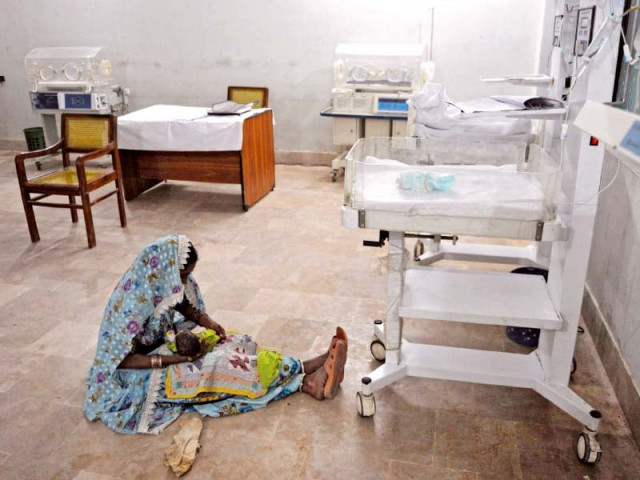Doctors-scarce Pakistan has 35% unemployed female doctors
Survey highlights 'waste of taxpayers' money', prevalent phenomena of 'doctor-wives'

A large number of female doctors are out of a job in Pakistan despite the fact that the World's fifth most populous country badly needs qualified medical practitioners, it was reported on Monday.
As many as 35% of female medical doctors are unemployed in Pakistan, revealed a research jointly conducted by Gallup Pakistan and PRIDE across the country.
Ironically, this is happening in a country where the resource-constrained government is spending billions of rupees on subsidising medical education in public sector universities.
Basing their research on the Labour Force Survey 2020-21, Gallup Pakistan and PRIDE analysed Pakistan Bureau of Statistics data on the labour market, especially focused on female medical graduates and disseminated the same for the country’s wider policy circles.
The crisis-hit country is facing a serious shortage of qualified doctors. "Pakistan has a dearth of trained medical doctors," said Bilal Gilani, executive director at Gallup Pakistan.
The survey depicted that 104,974 female medical graduates reside in the country. Of the total, 68,209 or 65% are working at various private and state-owned medical facilities.
The country, however, has 15,619 or 14.9% unemployed female doctors while 21,146, constituting 20.1% of the total number, are entirely out of the labour force.
Read Govt to recruit more doctors to address shortage
According to Pakistan Medical and Dental Council (PMDC), Pakistan has produced about 200,000 doctors, ever since its inception in 1946, and “half of them are females.”
Data from the Bureau of Emigration & Overseas Employment stated that around 30,000 doctors have left Pakistan since 1970 and, on average, around 1,000 doctors settle abroad every year.
Gilani stated that a major issue in Pakistan’s medical labour force is the lack of qualified female doctors. “Majority of them studied at public sector universities where the government spends billions of rupees to subsidise education,” he highlighted in his report.
“An average private university charges medical students more than Rs5 million, while the government imparts the same education for less than Rs1 million,” he said, adding that the government gives at least Rs4 million subsidy for one medical doctor.
Gilani stated that the survey depicts how taxpayers' money goes to waste every year since one in three female doctors opt out of the labour force.
Almost 50,000 female doctors on whom an investment of at least Rs200 billion in current value is wasted, the survey reported.
"We need to rethink about both – the loss of taxpayers and of the health industry – which these female doctors cause each year,” stated Gilani.
'Doctor wives'
Dr Shahid Naeem, director of policy research at PRIDE, said: “One in every five medical graduates opt to remain out of the labour force.” The majority of these ‘out of labour force’ female medical graduates are married, he said.
“This is indicative of a social trend of getting medical education in order to secure a better spouse,” Dr Naeem opined urging the government to review its policy of allocation of seats, at least in the public sector medical colleges, to ensure value for money.
The issue of female medical graduates or doctors who remain out of the labour force after completing medical education is a "serious concern that warrants further exploration", he said.
The findings of this survey support the phenomenon of ‘doctor brides’ as widely discussed and reported in Pakistan’s context and stipulate that many families prefer their daughters to have medical education, as it enables them to find a more suitable match for their marriage.
Read More How Pakistan's Healthcare Is Failing Its Female Doctors
The survey also addresses the regional breakup of the employment pattern of doctors. Findings reveal that about 28% and 72% of Pakistan's total medical graduates reside in rural and urban areas, respectively. In the rural region, 52% of Pakistan's medical graduates are employed while 31% are jobless.
The proportion of medical graduates who prefer to remain out of the labour force in rural areas stands at 17% lower than the national average of 20%.
Urban centres, on the other hand, have about 70% employed medical graduates while less than 9% are unemployed. However, the proportion of ‘out of labour’ doctors is more than 21% in urban areas.
The region-wise comparison shows that employment opportunities for female graduates are significantly higher – 78% in urban areas.
The regional analysis reveals that there are more unemployed female doctors in cities than in rural areas. It is pertinent to mention that around 76% of such doctors are married. By age group, the most frequent occurrence of female medical graduates (54%) belongs to the 25-34 years of age.
"The analysis of the data underlines the importance of targeted policy efforts to improve employment opportunities for medical graduates, especially in rural areas where unemployment rates are higher," concluded the survey.
The female medical graduates surveyed include persons who had passed the MBBS, BDS, MS/MSc, MPhil or PhD degrees in any field of medicine.
This survey collected data from close to 99,900 households across Pakistan and gave district-level representative results for the first time.



















COMMENTS
Comments are moderated and generally will be posted if they are on-topic and not abusive.
For more information, please see our Comments FAQ